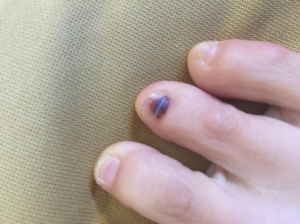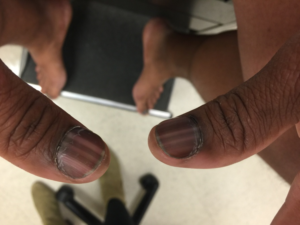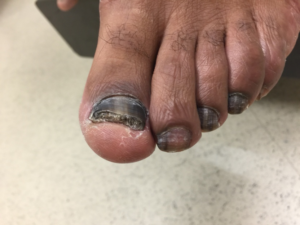Where you send us personal data in the context of asking us a question or query (for example, providing information about how you can donate or join the Skin of Color Society), we shall use the data you provide to respond to your question.
In General. We may collect personal information that can identify you, such as your name and email address, and other information that does not identify you. When you provide personal information through our website, the information may be sent to servers located in the United States and other countries around the world.
Use of cookies and other technologies to collect information. We use various technologies to collect information from your computer and about your activities on our site.
This website is hosted in the United States by a dedicated hosting organization. The hosting organization is contractually bound to implement measures to help protect your personal data and not to process such data except in accordance with our instructions. Any future hosting organization used in relation to this site will be similarly bound.
We take reasonable precautions to keep your personal data secure and require third party data processors to do likewise. All personally identifiable information is subject to restricted access to prevent unauthorized access, modification or misuse. Please note, however, that we may release your personal data if required to do so by law.
Our website pages contain electronic JavaScript code snippets known as web tags that allow us to count users who have visited these pages. Web tags collect only limited information which includes a cookie number, time and date of a page view, and a description of the page on which the web tag resides. These web tags do not carry any personally identifiable information and are only used to track the effectiveness of the website. Because web tags are the same as any other content request included in the request for a web page, you cannot opt-out or refuse them.
Under the General Data Protection Regulation (“GDPR”), your rights include:
We will retain your Personal Information for as long as needed or permitted in light of the purpose(s) for which it was obtained and consistent with applicable law. The criteria used to determine our retention periods include:
If you wish to ask any data protection questions or raise any data protection issues with us, please contact us using the details below:
Skin of Color Society (SOCS)
1932 S. Halsted St.
Suite #413
Chicago, IL 60608, USA
Case Report: What's Your Diagnosis?
Author: Vivian Wong MD-PhD, Department of Dermatology, Warren Alpert Medical School of Brown University; Providence, Rhode Island
Case history:
A 34-year-old female (Fitzpatrick Skin Phototype V) presents with 8-month history of nail discoloration on her right thumb. On examination, there is a 4.3 mm brown patch composed of irregular brownish to grayish longitudinal lines of various widths on the medial nail plate. The lesion does not disappear with pressure. The other finger and toe nails are uninvolved. She denies any preceding trauma and does not take any medication. What is your diagnosis?

Answer:
Explanation:
Subungual melanoma is a type of melanoma involving the nail apparatus. It has a predilection for patients with darker skin phototypes. Subungual melanoma is a diagnostic challenge, as numerous conditions could present with nail pigmentation. Several common culprits are discussed here. In addition, dermatologists should always obtain a thorough history to rule out exogenous or medication-induced melanonychia. Therefore, the diagnosis is often delayed, resulting in significant mortality. Further, amelanotic subungual melanoma has been reported, and it could mimick other neoplastic or inflammatory processes, such as squamous cell carcinoma, pyogenic granuloma, and viral warts.
As in this case, subungual melanoma favors a single digit, most likely the thumb of an adult. Examination of the lesion using dermoscopy is often helpful. Signs suggestive of the diagnosis include irregular pigmentation, broad pigment band (at least 3mm), tapered band with a wider base at the origin of the nail plate, blurry and fuzzy borders, and variegated color. Hutchinson’s sign, with pigmentation of periungual tissue, is a classic finding. Laugier-Hunziker syndrome, a benign hereditary pigmentary condition, could present with benign nail pigmentation. Perform serial photography for monitoring if suspicion is low, and perform a nail biopsy if suspicion is high.
Differential diagnoses:



References:
Mun, J.-H., Kim, G.-W., Jwa, S.-W., Song, M., Kim, H.-S., Ko, H.-C., Kim, B.-S. and Kim, M.-B. (2013), Dermoscopy of subungual haemorrhage: its usefulness in differential diagnosis from nail-unit melanoma. British Journal of Dermatology, 168: 1224–1229.
Braun RP, Baran R, Le Gal FA, Dalle S, Ronger S, Pandolfi R, et al. Diagnosis and management of nail pigmentations. J Am Acad Dermatol. 2007;56:835–847.
Dominguez-Cherit, J., R. Roldan-Marin, P. Pichardo-Velazquez, C. Valente, V. Fonte-Avalos, M. E. Vega-Memije, and S. Toussaint-Caire. "Melanonychia, Melanocytic Hyperplasia, and Nail Melanoma in a Hispanic Population." [In Eng]. J Am Acad Dermatol 59, no. 5 (Nov 2008): 785-91.
Wong V, Burgin S, Richert B, Baran R. “Subungual melanoma (nail melanoma)”. In: Goldsmith LA, editor. VisualDx. Rochester, NY: Logical Images. https://www.visualdx.com/visualdx/diagnosis/subungual-melanoma?moduleId=19&diagnosisId=56099
Wong V, Burgin S, Richert B, Baran R. “Onychopapilloma”. In: Goldsmith LA, editor. VisualDx. Rochester, NY: Logical Images. https://www.visualdx.com/visualdx/diagnosis/onychopapilloma?moduleId=19&diagnosisId=56100